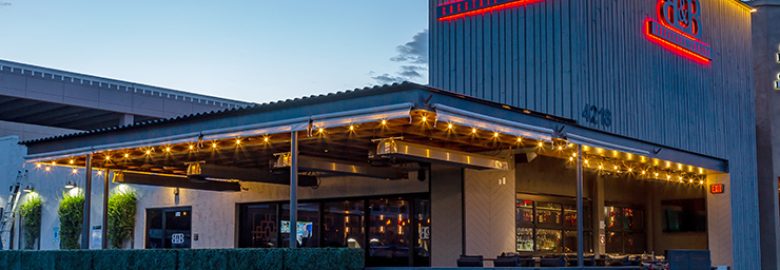Bones
Bones and Strip Club in Scottsdale
The Dark Side of Scottsdale’s Strip Clubs: A Look at the Physical Toll on Dancers’ Bones
Scottsdale, Arizona is known for its luxurious resorts, high-end shopping, and vibrant nightlife. However, there is a darker side to the city’s nightlife scene that often goes unnoticed. Strip clubs are a common sight in Scottsdale, and while they may seem like harmless entertainment, the physical toll they take on dancers’ bones is often overlooked.
Dancing in high heels for hours on end can cause serious damage to a person’s feet, ankles, and knees. This is especially true for dancers who perform on a regular basis. The constant strain on their joints and bones can lead to chronic pain, inflammation, and even long-term damage.
In addition to the physical strain of dancing, many strip clubs require their dancers to perform acrobatic moves and contortions that put even more stress on their bodies. These moves can cause sprains, strains, and even fractures if not executed properly.
To make matters worse, many dancers in Scottsdale’s strip clubs are not provided with proper training or equipment to prevent injuries. They are often expected to perform without any protective gear or support, which can exacerbate existing injuries and lead to new ones.
The lack of support for dancers’ physical health is not just a problem in Scottsdale, but across the entire strip club industry. Many dancers are not considered employees, but rather independent contractors, which means they are not entitled to benefits such as health insurance or workers’ compensation.
This lack of support can lead to dancers ignoring their injuries and continuing to perform, which can cause even more damage in the long run. It can also lead to dancers feeling like they have no other options but to continue working, even if they are in pain or injured.
The physical toll of dancing in strip clubs is not just limited to the bones and joints. Many dancers also suffer from skin irritation and infections due to the constant contact with poles and other equipment. They may also be exposed to harmful chemicals and cleaning agents used to sanitize the club, which can cause respiratory problems and other health issues.
Despite these risks, many dancers continue to work in strip clubs because it is often their only source of income. They may not have the education or job skills to find other employment, or they may be supporting themselves and their families on a low income.
It is important for strip clubs to take responsibility for the physical health and safety of their dancers. This includes providing proper training, equipment, and support for injuries. It also means treating dancers as employees and providing them with the same benefits and protections as other workers.
In addition, it is important for society as a whole to recognize the physical toll that strip clubs can take on dancers’ bodies. We must work to break down the stigma surrounding the industry and advocate for better working conditions and protections for those who work in it.
In conclusion, the physical toll of dancing in strip clubs is a serious issue that must be addressed. The constant strain on dancers’ bones and joints can lead to chronic pain and long-term damage, while the lack of support and protections can leave them vulnerable to injury and exploitation. It is time for the strip club industry to take responsibility for the health and safety of its workers, and for society to recognize the importance of advocating for better working conditions and protections for those who work in this industry.
Bones and Booze: The Risks of Heavy Drinking in Scottsdale’s Strip Club Scene
Scottsdale, Arizona is known for its vibrant nightlife, with a plethora of bars, clubs, and strip clubs. While many people enjoy a night out on the town, heavy drinking can lead to serious health risks, especially when combined with the sexually charged atmosphere of strip clubs.
One of the most significant risks associated with heavy drinking is the impact it can have on bone health. Alcohol consumption can interfere with the body’s ability to absorb calcium, which is essential for strong bones. Over time, this can lead to a condition called osteoporosis, which causes bones to become weak and brittle, increasing the risk of fractures.
In addition to the impact on bone health, heavy drinking can also lead to a range of other health problems. Alcohol is a depressant that can impair cognitive function, coordination, and judgment. This can increase the risk of accidents and injuries, especially in a strip club environment where patrons may be more likely to engage in risky behavior.
Furthermore, heavy drinking can also lead to liver damage, high blood pressure, and an increased risk of certain types of cancer. These health risks are compounded by the fact that many strip clubs in Scottsdale allow smoking, which can further increase the risk of cancer and other respiratory problems.
Despite these risks, many people continue to engage in heavy drinking in strip clubs. This may be due in part to the fact that alcohol is often used as a social lubricant, making it easier for people to interact with others in a sexually charged environment. However, it is important to remember that the risks associated with heavy drinking are very real, and can have serious long-term consequences.
If you do choose to drink in a strip club, it is important to do so in moderation. This means limiting your alcohol intake to no more than one or two drinks per hour, and avoiding shots or other high-alcohol beverages. It is also important to stay hydrated by drinking plenty of water, and to eat a meal before drinking to help slow the absorption of alcohol into your bloodstream.
In addition to these precautions, it is also important to be aware of your surroundings and to avoid engaging in risky behavior. This means avoiding drugs or other substances that can impair your judgment, and being mindful of your personal safety at all times.
Ultimately, the decision to drink in a strip club is a personal one, and each individual must weigh the risks and benefits for themselves. However, it is important to remember that heavy drinking can have serious long-term consequences, and that moderation is key to staying healthy and safe in any environment. By taking steps to limit your alcohol intake and stay aware of your surroundings, you can enjoy a night out in Scottsdale’s strip club scene without putting your health at risk.
From Pole Dancing to Osteoporosis: The Long-Term Effects of Working in Scottsdale’s Strip Clubs
Scottsdale, Arizona is known for its vibrant nightlife and entertainment scene. One aspect of this scene that often goes unnoticed is the strip clubs that dot the city. While these establishments may seem harmless, the long-term effects of working in them can be detrimental to the health of the dancers.
One of the most significant health risks associated with working in strip clubs is the impact on bone health. Pole dancing, a common activity in strip clubs, requires dancers to perform acrobatic moves that put a significant amount of stress on their bones. Over time, this stress can lead to a condition called osteoporosis, which causes bones to become weak and brittle.
Osteoporosis is a serious condition that can lead to fractures and other injuries. It is especially prevalent in women, who are more likely to suffer from the condition than men. This is because women have smaller bones and less bone density than men, making them more susceptible to bone loss.
In addition to the physical demands of pole dancing, many strip club dancers also engage in unhealthy behaviors that can further exacerbate their risk of developing osteoporosis. These behaviors include smoking, drinking alcohol, and using drugs. All of these substances have been shown to have a negative impact on bone health, making dancers even more vulnerable to osteoporosis.
Another factor that contributes to the risk of osteoporosis in strip club dancers is the lack of access to healthcare. Many dancers work as independent contractors and do not have access to health insurance or other benefits. This means that they may not receive regular check-ups or have access to preventative care, which can help identify and treat conditions like osteoporosis before they become more serious.
Despite these risks, many strip club dancers continue to work in the industry due to financial necessity. The pay can be lucrative, and for some, it may be the only way to make ends meet. However, it is important for dancers to be aware of the long-term health risks associated with their profession and take steps to mitigate them.
One way to reduce the risk of osteoporosis is to engage in weight-bearing exercises that help strengthen bones. This can include activities like weightlifting, running, and even walking. Dancers can also take steps to improve their overall health by quitting smoking, limiting alcohol consumption, and avoiding drug use.
It is also important for dancers to seek out healthcare when they need it. This can include regular check-ups with a primary care physician, as well as consultations with specialists like endocrinologists who can help monitor bone health.
In conclusion, working in Scottsdale’s strip clubs can have serious long-term effects on the health of dancers, particularly when it comes to bone health. While the financial rewards of the industry may be tempting, it is important for dancers to be aware of the risks and take steps to mitigate them. By engaging in weight-bearing exercises, improving overall health, and seeking out healthcare when needed, dancers can reduce their risk of developing osteoporosis and other health conditions.




